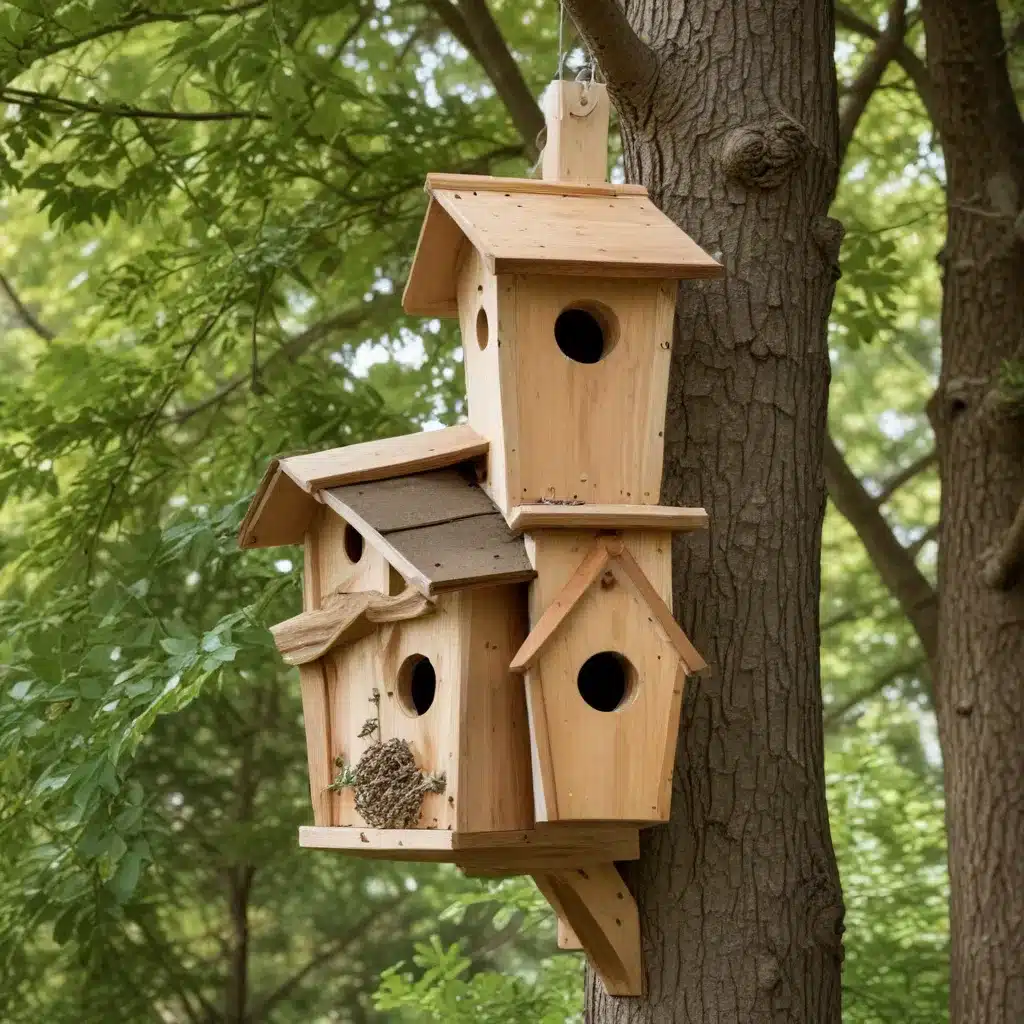
Avian Habitats
Urban Bird Ecology
As cities and suburbs continue to expand, the need for thoughtful urban wildlife management becomes increasingly important. Among the most prevalent and cherished feathered neighbors in these environments are our avian companions – the birds that share our spaces and bring vibrant life to our neighborhoods.
While many species have adapted remarkably well to the built landscape, the loss of natural nesting sites poses a significant challenge. The decline of large, mature trees with cavities and the removal of dense vegetation have deprived countless birds of their preferred breeding grounds. This is where we, as conscientious caretakers, can step in to provide vital support.
Birdhouse Design Principles
Constructing and strategically placing bird boxes is a proven way to supplement the dwindling natural nesting opportunities. However, simply erecting any old birdhouse is not enough – the design and placement must cater to the specific needs of the target species. Paying close attention to entrance hole size, perch considerations, and material selection can mean the difference between a thriving, occupied nest and an abandoned, unsuitable structure.
Nesting Behavior
Understanding the unique nesting behaviors of urban bird species is key to creating welcoming habitats. Some prefer secluded, enclosed spaces, while others gravitate toward more open platforms. Certain birds are colonial nesters, while others fiercely guard their individual territories. Recognizing these nuances allows us to design birdhouses that align with the birds’ natural instincts and preferences, maximizing the chances of successful occupancy.
Birdhouse Specifications
Entrance Hole Size
The size of the entrance hole is a critical factor in attracting the right birds and deterring unwanted visitors. Different species have varying size requirements, from the diminutive 1-inch opening preferred by chickadees to the larger 1.5-inch hole suitable for bluebirds. Carefully measuring and constructing the entrance ensures your birdhouse caters to your desired avian tenants.
Perch Considerations
Perches may seem like a charming addition to a birdhouse, but they can actually do more harm than good. While some birds appreciate a place to rest, perches can also provide easy access for predators to reach into the nest and target the vulnerable nestlings. It’s generally recommended to omit perches, as the birds can easily land on the entrance without them.
Material Selection
The choice of materials for your birdhouse is more than just an aesthetic decision – it can significantly impact the birds’ well-being. Untreated, unpainted wood is the ideal option, as it allows for natural breathability and temperature regulation. Galvanized screws are preferred over nails, as they are less likely to rust and pose a hazard to the occupants. Incorporating features like a sloped roof, drainage holes, and ventilation can further enhance the comfort and safety of the nesting environment.
Urban Bird Species
Common Urban Songbirds
The vibrant and charismatic songbirds that grace our cities and suburbs are a true delight. Species like the American Robin, House Wren, and Eastern Bluebird are well-known for their willingness to nest in human-provided structures, making them excellent candidates for birdhouse occupancy. Understanding their unique nesting preferences and feeding habits can help us create the perfect homes for these beloved avian neighbors.
Nest Site Preferences
Some urban birds, such as the House Finch and Mourning Dove, prefer more open-platform style nests, while others, like the House Wren and Chickadee, thrive in enclosed, cavity-like spaces. Recognizing these differences allows us to strategically place birdhouses that cater to the specific needs of our target species, increasing the chances of successful occupancy.
Feeding Habits
The dietary preferences of urban birds can also inform our birdhouse placement and the surrounding habitat. Species that rely on insects, such as the Tree Swallow and Eastern Bluebird, may be drawn to areas with abundant flying prey. In contrast, birds that primarily eat seeds and berries, like the House Finch and Northern Cardinal, may be more attracted to gardens and landscaping that provide a diverse array of natural food sources.
Birdhouse Placement
Ideal Locations
Choosing the right location for your birdhouse is crucial to its success. Factors such as proximity to potential predators, access to food and water, and exposure to the elements all play a role in determining the optimal placement. Ideally, birdhouses should be situated in areas with ample natural cover, such as shrubs or trees, to provide a sense of security and protection for the nesting birds.
Accessibility Factors
While birdhouses should be positioned to deter predators, they should also be easily accessible for monitoring and maintenance. Placing the boxes on sturdy, predator-resistant poles or platforms allows for convenient access, making it easier to clean and inspect the nests as needed. Avoid areas with heavy foot traffic or proximity to pet activity, as these can cause unnecessary disturbance to the birds.
Seasonal Considerations
The timing and placement of birdhouses should also take into account the seasonal needs of urban birds. In early spring, when many species are actively seeking nesting sites, strategically placed birdhouses can provide much-needed shelter and breeding grounds. As the seasons change, adjustments may be necessary to accommodate the birds’ shifting requirements, such as leaving boxes open during the winter months to allow for roosting or closing them off to deter unwanted occupants.
By following these principles of birdhouse design and placement, you can create a thriving urban avian oasis that supports the diverse array of feathered friends in your neighborhood. Providing these valuable nesting resources not only benefits the birds themselves but also enriches the overall biodiversity and natural harmony of our shared living spaces. For more information on creating bird-friendly habitats, be sure to visit the resources at Mika Birds Farm.


